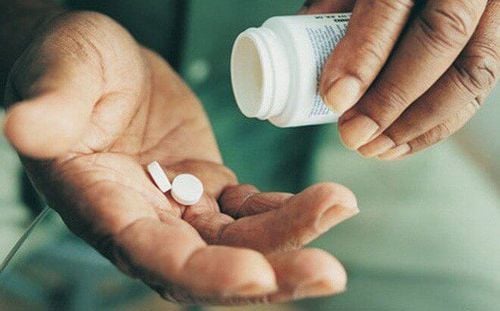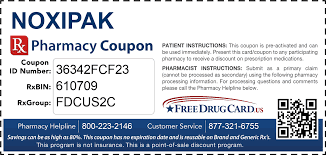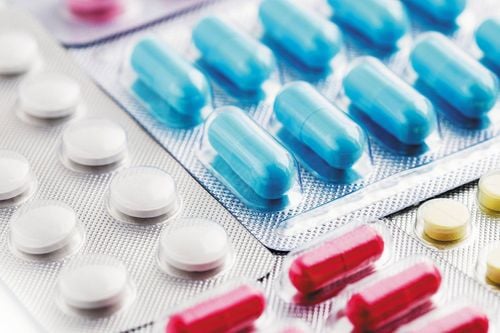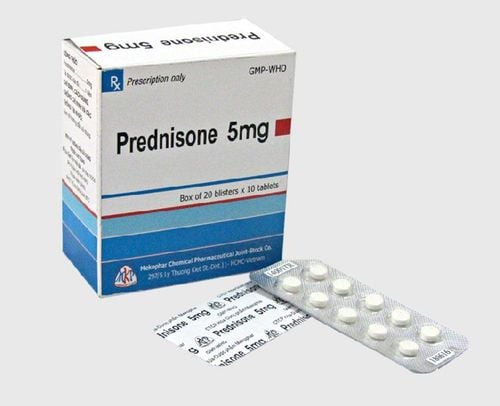This is an automatically translated article.
Hydrocolacyl belongs to the group of non-steroidal anti-inflammatory drugs with the most commonly known active form, Prednisolone 5mg, used for many different purposes. So what is the effect of the drug Hydrocolacyl? Find out detailed information through the following article about the effect of the drug hydrocolacyl 5mg1. What is Hydrocolacyl?
Glucocorticoids are adrenocortical steroids, both natural and synthetic, that are readily absorbed from the gastrointestinal tract. Hydrocolacyl is a form of glucocorticoid with the main effects of anti-allergic, anti-inflammatory, anti-secretory, anti-toxic and immunosuppressive of many organs in the body. The active form of Prednisolone is rapidly and almost completely absorbed after oral administration; it reaches peak plasma concentrations after 1-3 hours. However, there are differences between subjects showing impaired absorption in some people. The plasma half-life is approximately 3 hours in adults and slightly less in children. The drug is prepared in the form of tablets or hard capsules with a strength of 5 mg.
Medicines are prescribed and need to be monitored when used, so do not buy and use them without consulting your doctor.
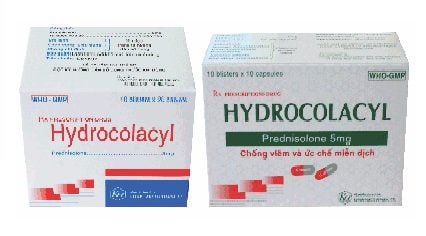
Thuốc Hydrocolacyl có hoạt chất là Prednisolon 5mg
2. What are the effects of Hydrocolacyl?
Many studies show that hydrocolacyl 5mg has a strong anti-inflammatory effect in disorders of many organ systems and also has the effect of weakening the body's immune system. Here are some hydrocolacyl 5mg drug effects:
2.1. Endocrine disorders. Secondary or primary adrenocortical insufficiency (cortisone or hydrocortisone would be first options; or physicians will use synthetic analogues that can be used in combination with mineralocorticoids if possible; supplementation with mineralocorticoids for infants are of particular importance). Congenital adrenal hyperplasia Irreversible thyroiditis Increased blood calcium is associated with cancer 2.2. Rheumatic disorders. Hydrocolacyl use is considered adjuvant therapy for short-term use (mainly treating patients during acute exacerbations) for the following diseases:
Psoriatic arthritis Rheumatoid arthritis including juvenile rheumatoid arthritis Adolescents (some cases may require low-dose maintenance therapy) Ankylosing spondylitis Bursitis Acute Tendonitis Nonspecific Acute Gout Post-traumatic Osteoarthritis Osteoarthritis Bursitis Epitheliitis model 2.3. Diseases related to collagen. Hydrocolacyl use in acute exacerbation or maintenance treatment in some cases:
Systemic lupus erythematosus Acute rheumatic heart disease Systemic polymyositis Dermatomyositis 2.4. Dermatologic disease Pemphigus Herpetiformis bullous dermatitis Severe erythema multiforme Exfoliative dermatitis Severe psoriasis Severe seborrheic dermatitis
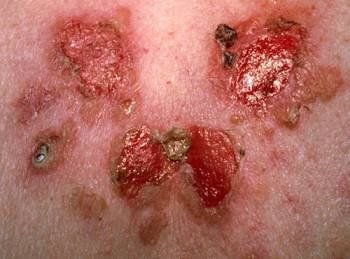
Thuốc Hydrocolacyl được sử dụng điều trị bệnh Pemphigus
2.5. Allergic forms. Management of severe allergic or intractable conditions unlikely to be curable with adequate trials of conventional treatment:
Allergic Rhinitis Serum Asthma Bronchial Asthma Contact Dermatitis Inflammation Allergic skin Drug allergy 2.6. Ophthalmic diseases. Hydrocolacyl is indicated in cases of acute and chronic inflammation involving the eyes and the periorbital areas.
Allergic conjunctivitis Keratitis Allergic corneal ulceration Herpes zoster ophthalmicus Iritis choroiditis Diffuse posterior uveitis Optic neuritis 2.7. Respiratory disease Symptomatic sarcoidosis Loeffler syndrome Pulmonary fibrosis Alveolar pneumonia Berylliosis drug-induced lung disease Fluid restriction in pleural tuberculosis Pneumonia due to asphyxiation 2.8. Hematologic disorders Idiopathic thrombocytopenic purpura in adults Secondary thrombocytopenia in adults Acquired hemolytic anemia Leukopenia (anemia of red blood cells) Congenital hypoplastic anemia (erythrocytosis) 2.9. Cancers. Leukemia and lymphoma in adults Acute childhood leukemia 2.10. Edema states. Has a diuretic or proteinuria-lowering effect in nephrotic syndrome, without uremia, of the idiopathic type or due to lupus erythematosus.
2.11. Gastrointestinal diseases To help patients overcome the severe stage of the disease in:
Colitis Inflammatory bowel disease 2.12. Nervous system Exacerbation of multiple sclerosis
2.13. Other organs Tuberculous meningitis Trichinosis with neurological or myocardial involvement Immunosuppression in organ transplantation
3. Some guidelines for hydrocolacyl treatment to remember
Corticosteroids are symptomatic relief treatments due to their anti-inflammatory effects; They do not have a curative effect.
The appropriate individual dose must be determined by trial and must be reassessed regularly according to disease progression.
When corticosteroid therapy is prolonged and the dose is increased, the rate of disabling side effects increases.
In general, the initial dose should be maintained or adjusted until a predictable response is observed. The dose should be tapered gradually until the lowest dose is reached to maintain an adequate clinical response. Using the lowest effective dose can also minimize side effects.
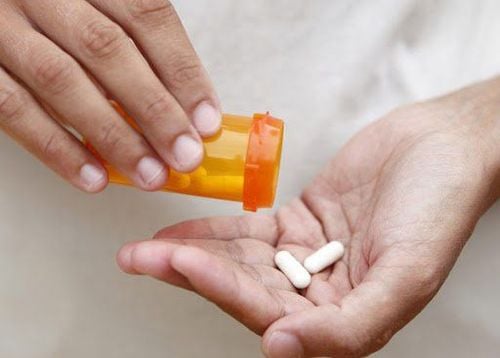
Thuốc hydrocolacyl cần được sử dụng theo đúng chỉ dẫn của bác sĩ
In patients who have received more than physiological doses of systemic corticosteroids (approximately 7.5 mg Hydrocolacyl or equivalent) for more than 3 weeks, abrupt discontinuation of the drug should be considered. How dose reductions should be made depends largely on whether the disease is likely to recur when the dose of systemic corticosteroids is reduced. Clinical assessment of disease activity may be necessary during drug discontinuation. If the disease is unlikely to recur on discontinuation of systemic corticosteroid therapy, but hypothalamic-pituitary-adrenal (HPA) suppression is uncertain, corticosteroid doses may be rapidly reduced to physiological doses. After reaching a daily dose equivalent to 7.5mg Hydrocolacyl, the dose should be reduced more slowly to restore HPA axis.
Abrupt discontinuation of systemic corticosteroid therapy, lasting up to 3 weeks, is appropriate if it is considered unlikely that the disease will recur. Abrupt discontinuation of doses up to 40 mg of prednisolone daily, or equivalent for 3 weeks is unlikely to result in clinically relevant HPA axis suppression in the majority of patients. In the following patient groups, gradual discontinuation of systemic corticosteroid therapy should be considered even after courses of 3 weeks or less:
Patients who have received multiple systemic corticosteroids, especially if used during more than 3 weeks. When a short-term course has been indicated within one year of discontinuing long-term therapy (months or years). Patients may have a reason for adrenocortical insufficiency in addition to exogenous corticosteroid therapy. Patients receiving systemic corticosteroid doses greater than 40 mg per day of prednisolone (or equivalent). The patient used several times in the evening. During prolonged treatment, it may be necessary to temporarily increase the dose during times of stress or during exacerbations of the disease.
If there is no satisfactory clinical response to prednisolone, the drug should be discontinued gradually and the patient switched to alternative therapy.
* General dose
Adults including the elderly:
The lowest effective dose should be used for the minimum time to minimize side effects.
Treatment of elderly patients, especially if long term, should be planned keeping in mind the more serious consequences due to the common side effects of corticosteroids in old age
Initial: Initial dose may varies from 5mg to 60mg per day in divided doses, given as a single dose in the morning after breakfast or a double dose on alternate days. Dosage depends on the disorder being treated. The dose can usually be reduced over a few days but may have to be continued for several weeks or months.
Maintenance dose 2.5 to 15mg daily, but higher doses may be needed.
* Dosage for typical diseases
Intermittent dosing regimen: A single dose of prednisolone in the morning on alternate days or longer intervals is acceptable therapy for some patients . When this regimen is practical, the degree of pituitary-adrenal suppression can be minimized. Specific Dosing Guidelines: The following recommendations for certain corticosteroid-responsive disorders are intended as guidelines only. Acute or severe disease may require initial high-dose therapy with reduction to the lowest effective maintenance dose as soon as possible. Dose reduction should not exceed 5 - 7.5mg per day during chronic treatment. + Allergies and skin disorders: Starting dose 5-15mg daily
+ Rheumatoid arthritis: The usual starting dose is 10 -15mg daily. Lowest daily maintenance dose compatible with tolerable symptomatic relief
Blood disorders and lymphoma: A starting daily dose of 15 - 60 mg is usually needed with dose reduction after response clinical or complete hematology tests. Higher doses may be needed for remission of acute leukemia.
+ Children: Although appropriate fractions of the actual dose may be used, dosage will usually be determined by the same clinical response as in adults. Prednisolone should be used only when specifically indicated, in the minimum dose and for the shortest possible duration
* Use in the elderly
Treatment should be planned for elderly patients, especially if In the long term, note more serious consequences due to the common side effects of corticosteroids in old age, especially osteoporosis, diabetes, hypertension, hypokalemia, susceptibility to infections, and thinning of the skin. . Close clinical supervision is required to avoid life-threatening reactions.
* Use in young children
Corticosteroids cause growth retardation in infancy, childhood and adolescence, possibly irreversible, and therefore long-term use in pharmacological doses should be avoided. If prolonged therapy is required, treatment should be limited to minimal hypothalamic-pituitary axis suppression and growth retardation. The growth and development of infants and children should be closely monitored.
Please dial HOTLINE for more information or register for an appointment HERE. Download MyVinmec app to make appointments faster and to manage your bookings easily.




